The EPLs and the main methods of protection
Each equipment that must be installed in an ATEX classified area must have a certain level of protection, indicated in the legislation with the acronym EPL (Equipment protection Level). The level of protection is obtained by applying technical regulations that define the protection methods. There are many ways of protection, some have a historical origin, others are more recent...
by Andrea Battauz, R&D Project Engineer of Cortem Group
Introduction
Each equipment that must be installed in an ATEX classified area must have a certain level of protection, indicated in the legislation with the acronym EPL (Equipment protection Level).
The level of protection is obtained by applying technical regulations that define the protection methods.
The in-depth knowledge of the protection methods is the prerogative of the equipment’s manufacturers and of the notified bodies who are called to verify the requirements. However, the understanding of some aspects of the protection methods is an essential condition for a correct installation, so let's start with this a series of articles dedicated to understanding the fundamental bases of the protection methods in their more distinctly plant requirements.
For greater clarity, we will restrict the field of application to ATEX-compliant electrical devices, in surface systems with the risk of the presence of an explosive atmosphere due to a mixture of air and flammable substances in the form of gas or vapor. [1]
The reference legislation and the methods of protection
The reference standard series for ATEX-compliant electrical devices is the EN 60079.
It is useful to know that, currently, the regulatory process is structured with the development and release of IECEX standards in the international context. Subsequently, CENELEC releases the version for the European market IEC>EN. The process ends with the release of the national version which in Italy is licensed by the CEI, EN>CEI EN. [2]
In the national context, the standard can be integrated by the so-called special national conditions, among which some famous ones concern particular types of threads present in specific European countries.In the following, therefore, speaking of the innovations introduced at the regulatory level, we will refer to the IECEX regulation, implying the subsequent transposition at European and national level.
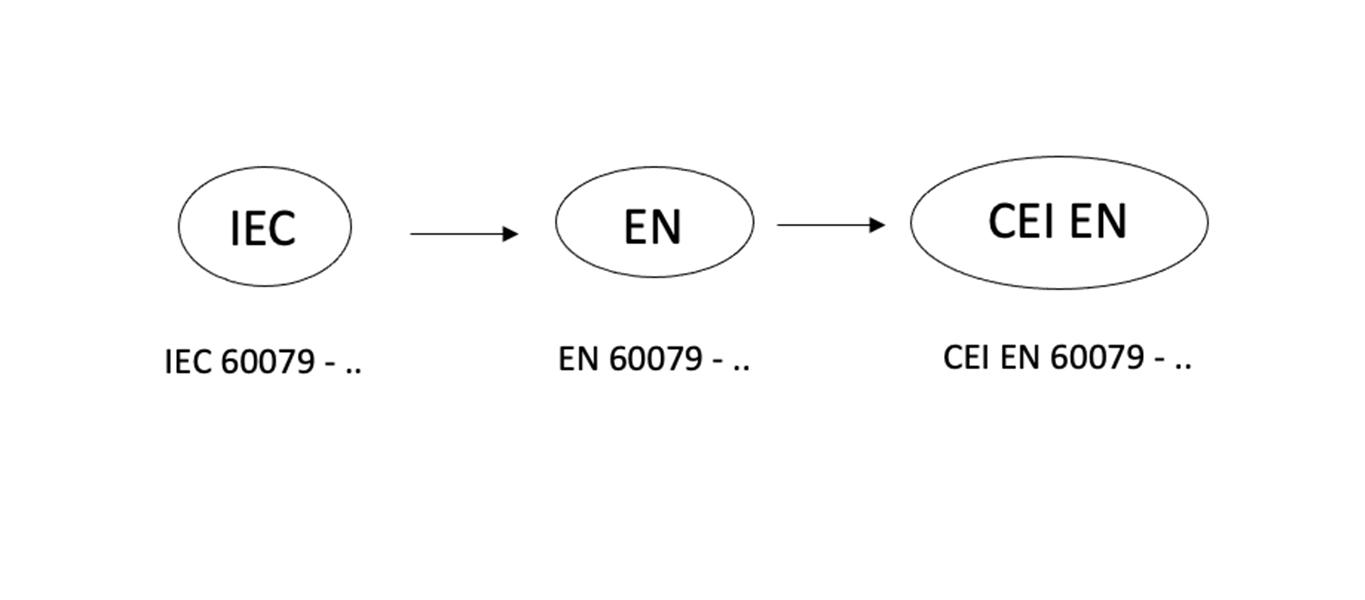
There are many ways of protection, some have a historical origin, others are more recent, in table 1 we can appreciate the various types.
We therefore understand the variety of protection methods and the need to limit them to those of more common use. If the device had a different type of protection on the marking plate or in the user manual, the specific legislation should be investigated in a more targeted manner.
In this regard, in figure 2 we highlight where the type of protection is indicated on the plate.

Table 1: EPL, type of protection and reference standard
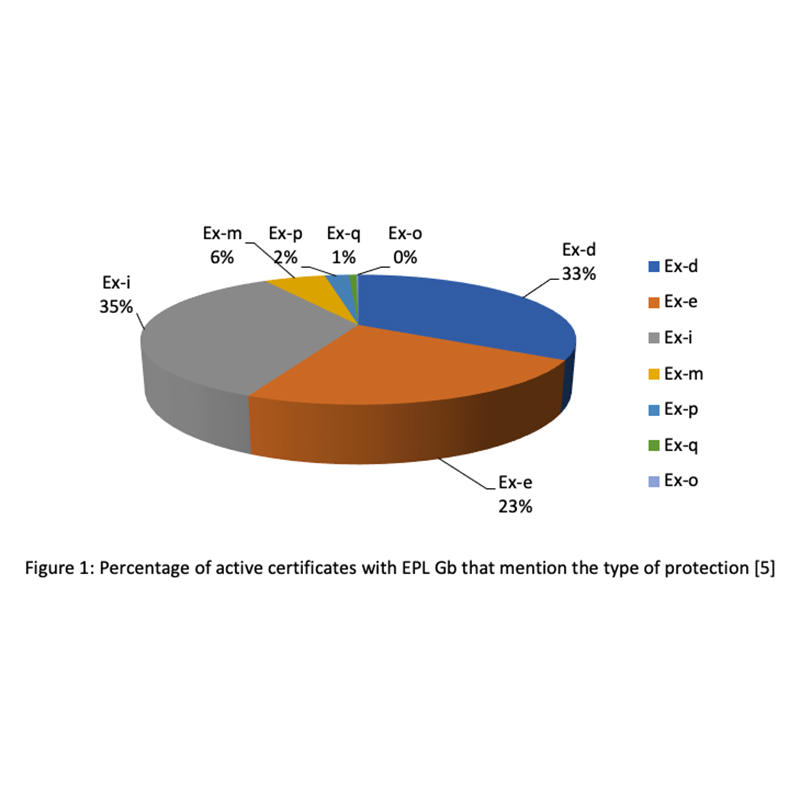
The most used methods of protection
So, what are the most used methods of protection? On the official website of the IECEX [4] it is possible to search on the certificates issued for devices and having active status.It is clear that the three modes Ex-i, Ex-d, and Ex-e are used in a percentage higher than 90% for the EPL Gb. A prominent place then belongs to the Ex-n protection mode in the EPL Gc.
Table 2 shows the most used protection methods with the relative EPL and the reference legislation.
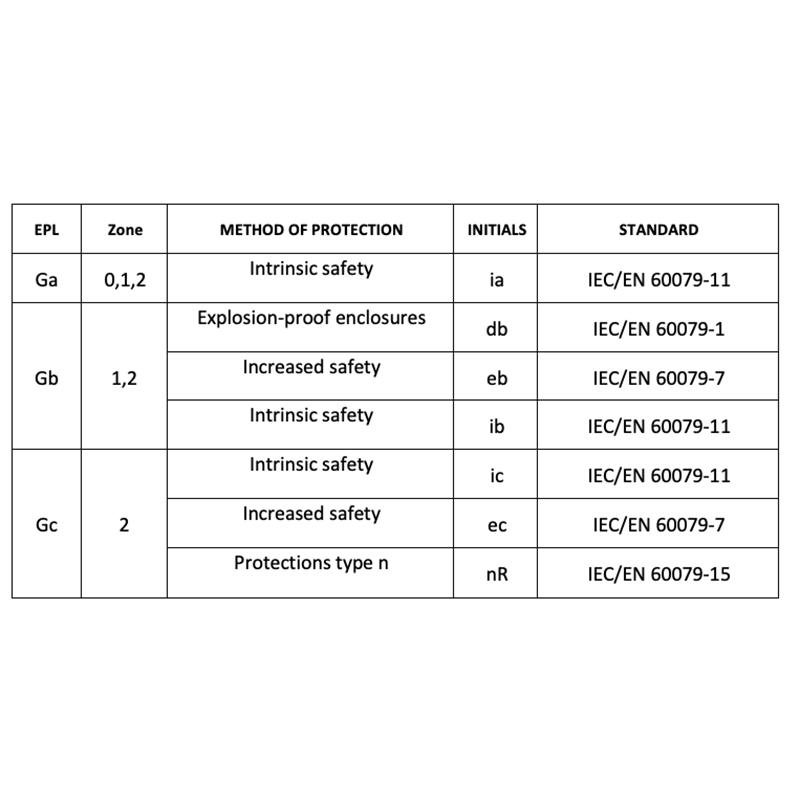
Some news in the methods of protection
The regulatory process continually introduces news, some of them must be known to avoid misunderstandings. In this regard, we mention the recent introduction of new levels of protection in individual protection modes. In the Ex-d and Ex-e protection modes, the equivalent references Ex-db and Ex-eb exclusive to the EPL Gb have been introduced with the latest versions of the IEC 60079-1 and IEC 60079-7 standards.
Ex-d becomes Ex-db
Ex-e becomes Ex-eb
Furthermore, some EPL Gc protection modes, which in the past were contained in IEC 60079-15, have been moved to the new editions of the Ex-d, Ex-e type standards, constituting weakened forms of these protection modes intended for to Zone 2.
Table 3 shows the prospectus of this reallocation.
Hence the possibility of finding in the marking the methods of protection Ex-ec, Ex-dc instead of Ex-nA and Ex-nC (the latter marking will continue to exist for devices other than closed cell interruption devices).
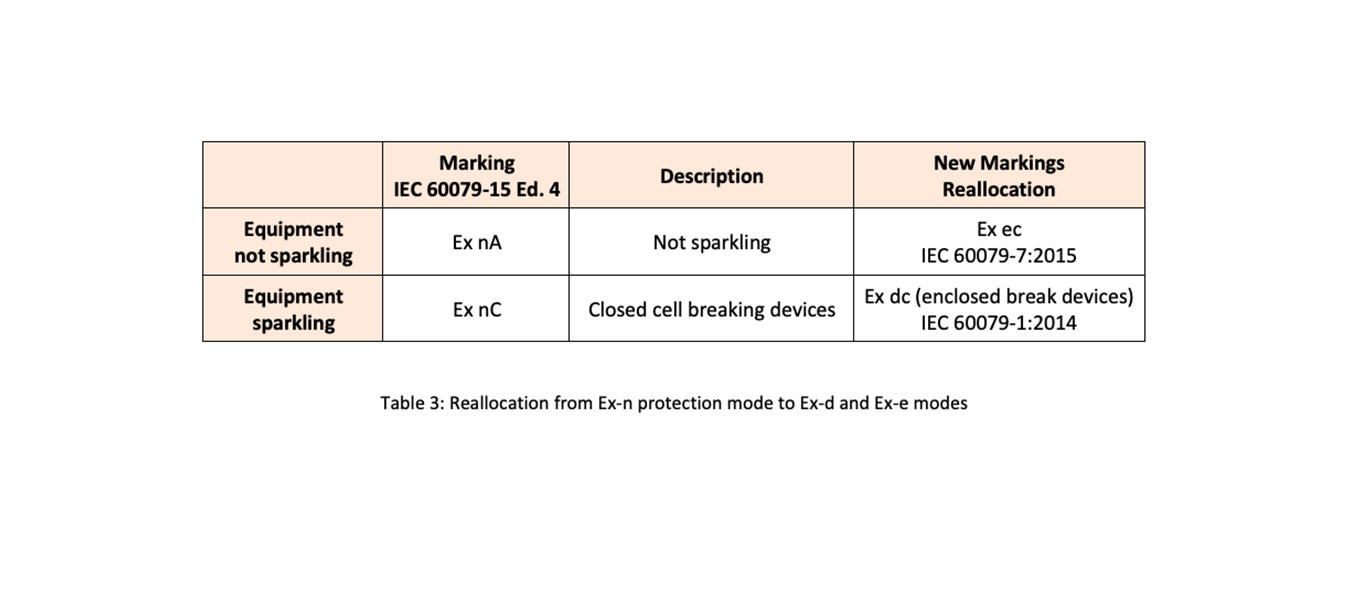
Table 3: Reallocation from Ex-n protection mode to Ex-d and Ex-e modes
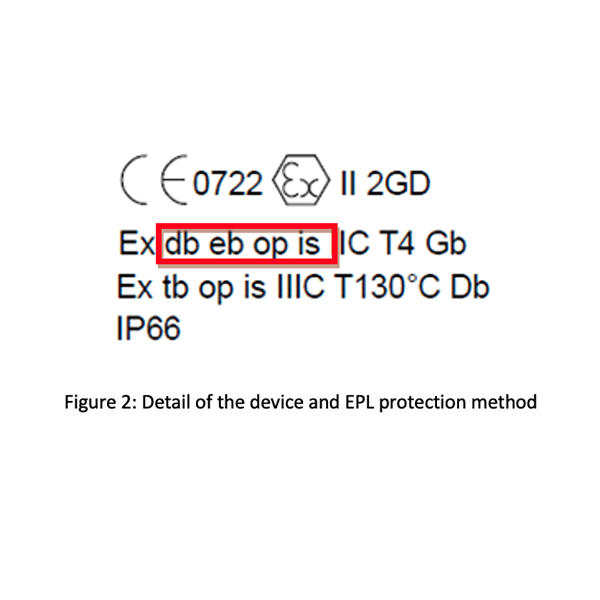
The methods of protection and the marking
The indication on the protection mode is immediately after the word Ex.
An example is shown in the red box in Figure 2
The regulatory development has led to the introduction of new protection methods and the subdivision of some of them into different protection levels. It was possible to carry out a selection based on the certificates active in IECEX by reducing the subject of the ATEX study to the four main protection modes Ex-d, Ex-e, Ex-i and Ex-n.
Notes, reference standards and bibliography.
[1] DIRECTIVE 2014 34 EU - ANNEX 1
The ATEX 2014 34 EU directive makes a first distinction between equipment for mining plants and equipment for surface plants. In the latter area, it then divides explosive atmospheres due to flammable gases, vapours, or mists from those due to dust. In the article we do not talk about "mists" as they are excluded from the application of CEI EN 60079-14.
[2] IECEX (International Electrotechnical Commission System for Certification to Standards Relating to Equipment for Use in Explosive Atmospheres) is the section of the IEC dedicated to explosive atmospheres, CENELEC is the European Committee for Electrotechnical Standardization, the CEI is the Italian Electrotechnical Committee
[3] The complete list can be found in EN / IEC 60079-14
[4] We do not have this data for ATEX equipment but, considering that many ATEX equipment have IECEX certification also, the data is significant
[5] IECEX OFFICIAL WEB SITE https://www.iecex-certs.com/#/search